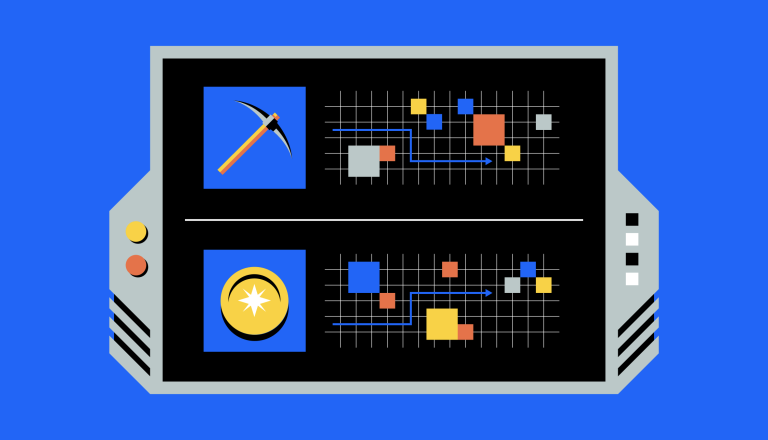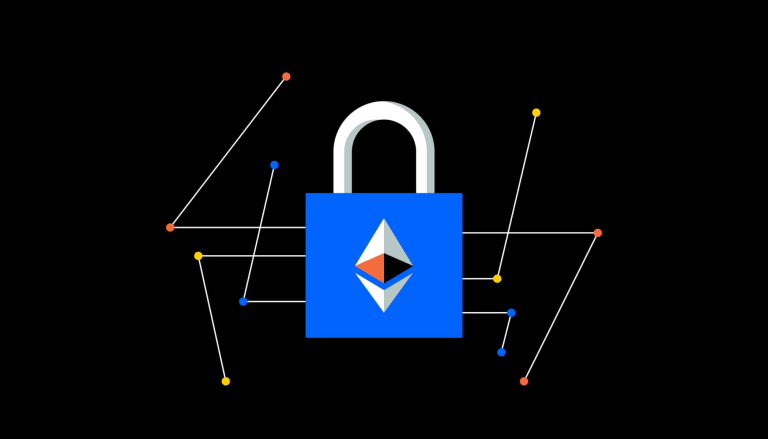
What is DeFi?
DeFi is short for decentralized finance, an umbrella term for peer-to-peer financial services on public blockchains.
Want to expand your crypto vocabulary? Get started with the essential terms

DeFi is short for decentralized finance, an umbrella term for peer-to-peer financial services on public blockchains.

Non-fungible tokens (NFTs) are a kind of cryptoasset in which each token is unique. They can be used to authenticate ownership of digital assets.

Smart contracts allow developers to build apps that take advantage of blockchain security, reliability, and accessibility.

GameFi, or game finance, is a fusion of online gaming and decentralized finance, creating an in-game economy. It introduces the concept of play-to-earn (P2E), where in-game activit...

A beginner’s guide to the hit NFT-based Pokémon-style game — and its native cryptocurrency...

A Bitcoin halving happens every four years, when the amount of bitcoin awarded to miners i...

A beginner’s guide to decentralized exchanges

The Internet Computer is creating a decentralized internet — with independent data centers...

“Proof of work” and “proof of stake” are the two major consensus mechanisms cryptocurrenci...

Protocols are basic sets of rules that establish the structure of a blockchain and allow d...

A private key is like a password that allows you to access and manage your crypto funds.

Technical analysis looks at patterns in market data to identify trends. Fundamental analys...

Volatility is a measure of how much the price of an asset has moved up or down over time.

A beginner’s guide to the biggest DEX on Ethereum

Hash rate is a measure of the computational power of a blockchain network, group, or indiv...

ERC-721 is a non-fungible token standard on the Ethereum blockchain. It provides a set of...

The Ethereum Virtual Machine (EVM) is a decentralized computation engine that executes sma...

Nodes are components of a blockchain network, maintaining the latest record of transaction...

Sidechains are separate blockchain networks that connect to a parent blockchain, aiming to...

BRC-20 tokens are a development in the cryptocurrency space. They are a development in the...

Cloud mining is a method to mine cryptocurrencies by leasing equipment or renting computin...

Zero-knowledge proofs (ZKPs) are a cryptographic method that allows one party to prove the...

ERC-20 is a technical standard for establishing fungible assets on the Ethereum blockchain...

ERC-1155 is a token standard on the Ethereum blockchain that enables the creation and tran...

ZK Rollups are a layer-2 scaling solution that aims to enhance blockchain scalability by m...

Blockchain oracles are entities that connect blockchains to external systems, enabling sma...

Soulbound Tokens (SBT) are a theoretical concept of non-transferable digital tokens that c...

Blockchain interoperability refers to the ability of different blockchain networks to comm...

The article discusses a system called BitVM, which is not recognized or verified by any au...

A soft fork aims to be a backward-compatible upgrade to a blockchain, allowing nodes runni...

Token burning refers to the permanent removal of a specific number of tokens from the circ...

DPoS is a consensus mechanism that evolved from Proof of Stake (PoS), intending to enhance...

Layer-0 protocols are the foundational infrastructure upon which Layer-1 blockchains are b...

A DEX aggregator is a service that brings together liquidity from various decentralized ex...

SocialFi combines the principles of social media and decentralized finance, aiming to prov...

A recovery phrase is a series of words generated by your cryptocurrency wallet that give y...

The NFT floor value is the lowest value for an NFT in a given collection. It provides insi...

Impermanent loss is a risk that occurs when participating in DeFi liquidity pools, where t...

Real-World Assets (RWAs) are tangible assets that exist outside the digital spectrum, whic...